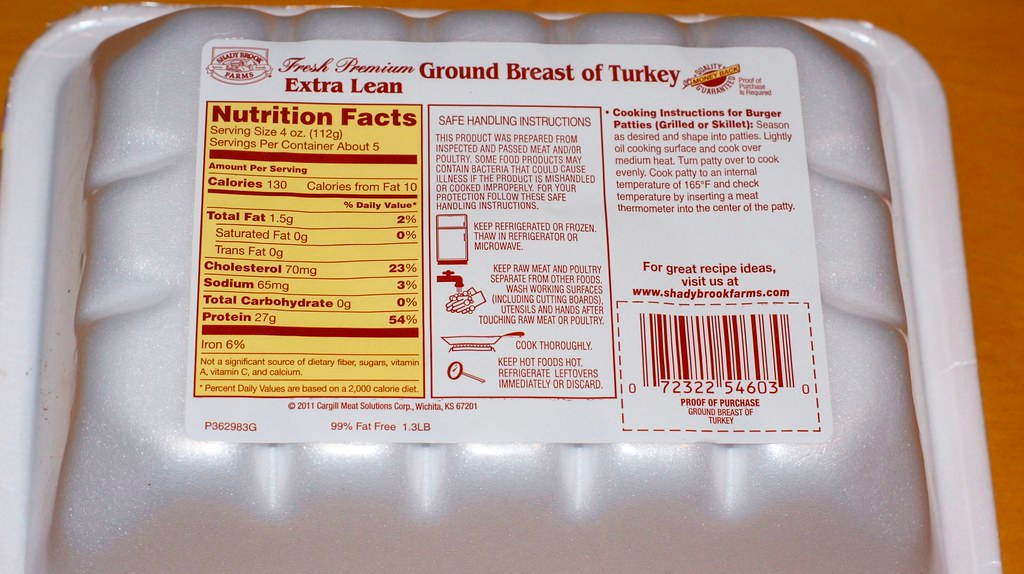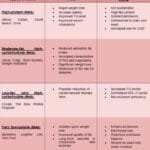Navigating the world of nutrition can be overwhelming, but understanding food labels is a powerful tool to make informed decisions. As a registered dietitian and doctor, I’m here to guide you through the process, empowering you to choose foods that support your health and well-being. This comprehensive guide will explain how to decipher food labels, understand nutrient claims, and make choices aligned with your individual dietary needs. Let’s get started!
Table of Contents
- Introduction: Decoding Food Labels
- Serving Size and Servings Per Container
- Calories: Understanding Your Energy Intake
- Macronutrients: Carbs, Proteins, and Fats
- Added Sugars: A Key Consideration
- The Ingredients List: What’s Really in Your Food?
- Food Label Features: A Quick Comparison
- Nutrient Claims: Understanding “Low Fat,” “High Fiber,” etc.
- Fortified and Enriched Foods
- Organic Foods: What Does it Mean?
- Non-GMO Foods: Understanding the Label
- Creating a Balanced Diet
- Conclusion: Your Path to Informed Food Choices
- About Dr. Sumaiya Petiwala
- References
Introduction: Decoding Food Labels
Food labels can be a helpful tool for making informed food choices and maintaining a healthy diet. Understanding how to read and interpret food labels can help you make informed decisions about the foods you eat, and can be especially useful for people with dietary restrictions or who are trying to manage specific health conditions.

Serving Size and Servings Per Container
It’s important to pay attention to the serving size listed on the label, as the nutritional information provided is based on this serving size. The servings per container can also be useful for understanding how many servings are in the package and how much of the food you should be consuming. Many times, a package that *looks* like a single serving actually contains multiple servings. Always check this first!
Calories: Understanding Your Energy Intake
The number of calories per serving can help you manage your energy intake and maintain a healthy weight. The recommended daily intake of calories varies based on age, gender, and activity level, so it’s important to consider your own needs when making food choices. Generally, a 2,000-calorie diet is used as a standard for nutrition advice, but your individual needs may be higher or lower.
Macronutrients: Carbs, Proteins, and Fats
The macronutrients listed on a food label include carbohydrates, proteins, and fats. The percentage of your daily intake that each macronutrient represents can be found under the “Percent Daily Value” section. It’s important to pay attention to the *types* of fats and carbohydrates in a food, as some types are healthier than others. For example, look for foods higher in unsaturated fats (like those found in avocados and nuts) and lower in saturated and trans fats. For carbohydrates, prioritize those from whole grains, fruits, and vegetables over refined grains and added sugars.
Added Sugars: A Key Consideration
The food label will list the total amount of sugars in a food, including both natural and added sugars. It’s important to be aware of added sugars, as they can contribute to weight gain, type 2 diabetes, and other health problems when consumed in excess.
The Ingredients List: What’s Really in Your Food?
The ingredients in a food are listed in order of quantity, with the largest component listed first. This can be helpful for understanding the main components of a food and for identifying any potential allergens or ingredients that you may want to avoid. Look for whole, unprocessed ingredients whenever possible.
Food Label Features: A Quick Comparison
| Feature | Information Provided |
|---|---|
| Serving Size | The amount of food that the nutrition information is based on. |
| Servings Per Container | The total number of servings in the package. |
| Calories | The energy content of one serving. |
| Total Fat | The total amount of fat in one serving, including saturated and trans fats. |
| Saturated Fat | A type of fat that can raise cholesterol levels. |
| Trans Fat | An unhealthy type of fat that should be avoided. |
| Cholesterol | A waxy substance found in animal products. |
| Sodium | The amount of salt in one serving. |
| Total Carbohydrate | The total amount of carbohydrates in one serving, including fiber and sugars. |
| Dietary Fiber | A type of carbohydrate that is beneficial for digestion. |
| Total Sugars | The total amount of sugars in one serving, including natural and added sugars. |
| Added Sugars | Sugars that have been added to the food during processing. |
| Protein | An essential macronutrient for building and repairing tissues. |
| Vitamins and Minerals | Essential micronutrients that are needed for various bodily functions. These are listed as % Daily Value. |
| Percent Daily Value (%DV) | The percentage of the recommended daily intake of a nutrient that is provided in one serving. |
Nutrient Claims: Understanding “Low Fat,” “High Fiber,” etc.
Some food labels may make claims about the nutrient content of the food, such as “low fat” or “high fiber.” It’s important to be aware of these claims and to understand what they mean in the context of the recommended daily intake of the nutrient. The FDA has specific definitions for these terms. For example, “low fat” means the food contains 3 grams of fat or less per serving.
Fortified and Enriched Foods
Some foods may be fortified or enriched with nutrients, such as iron or calcium. This can be helpful for people who may be at risk of deficiency, but it’s important to be aware of the added nutrients and to consider whether they are necessary in your diet. Fortification adds nutrients that weren’t originally present, while enrichment replaces nutrients lost during processing.
Organic Foods: What Does it Mean?
Foods that are labeled as “organic” must meet certain production standards, including the use of organic ingredients and the prohibition of certain pesticides and genetically modified organisms (GMOs). While organic foods can be a good choice for some people, they may not always be more nutritious than conventionally produced foods. The “organic” label primarily refers to farming practices.
Non-GMO Foods: Understanding the Label
Foods that are labeled as “non-GMO” do not contain genetically modified ingredients. While some people choose to avoid GMOs for personal or environmental reasons, there is currently no scientific evidence to suggest that GMOs are harmful to human health, according to major scientific organizations like the World Health Organization and the National Academies of Sciences, Engineering, and Medicine.
Creating a Balanced Diet
In addition to using food labels to make informed food choices, it’s also a good idea to pay attention to the overall balance of your diet. This means choosing a variety of foods from all food groups and eating in appropriate portion sizes. A healthy diet should include a balance of carbohydrates, proteins, and fats, as well as a variety of fruits, vegetables, and whole grains. Aim for a plate that is half fruits and vegetables, one-quarter lean protein, and one-quarter whole grains.
Conclusion: Your Path to Informed Food Choices
By using food labels and considering the overall balance of your diet, you can make informed food choices that support your overall health and well-being. As always, it’s important to consult with a healthcare provider or a registered dietitian for personalized nutrition advice. I am here to help guide you on your journey to better health!
About Dr. Sumaiya Petiwala
My name is Dr. Sumaiya Petiwala, and I am a registered dietitian cum doctor. I am passionate about helping individuals improve their health through proper nutrition and lifestyle changes. With my dual qualification, I am able to provide both medical and nutritional guidance to my clients, ensuring they receive comprehensive and holistic care. I am excited to help individuals achieve their health and wellness goals.
Fill my online patient history form to get started NOW:
Get FREE advice via email!
References
- U.S. Food and Drug Administration (FDA). (n.d.). *How to Understand and Use the Nutrition Facts
- American Heart Association. (n.d.). *Added Sugars*. Retrieved from
- National Academies of Sciences, Engineering, and Medicine. (2016). *Genetically Engineered Crops: Experiences and Prospects*. Washington, DC: The National Academies Press.
- World Health Organization. (n.d.). *Food safety: Frequently asked questions on genetically modified foods*.


